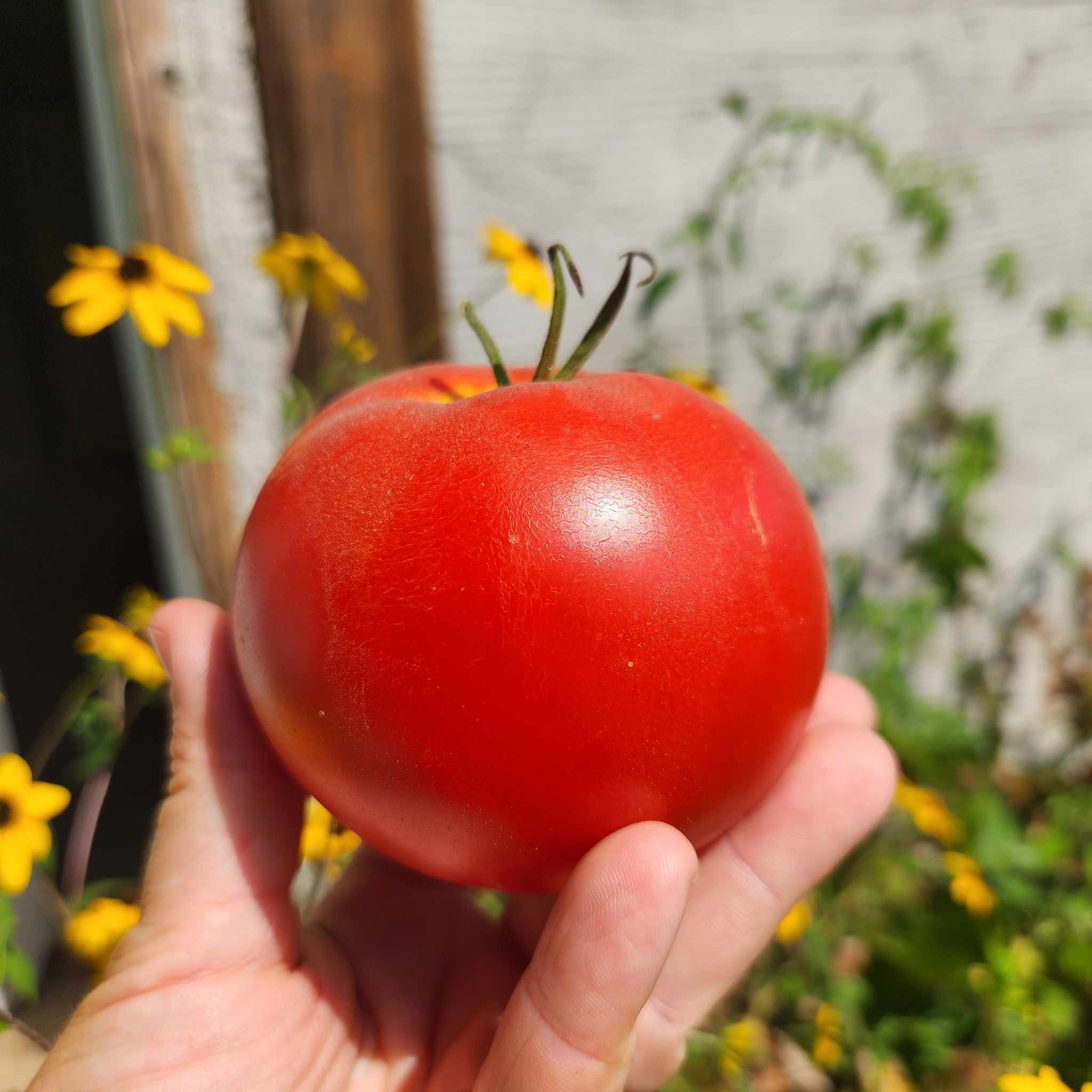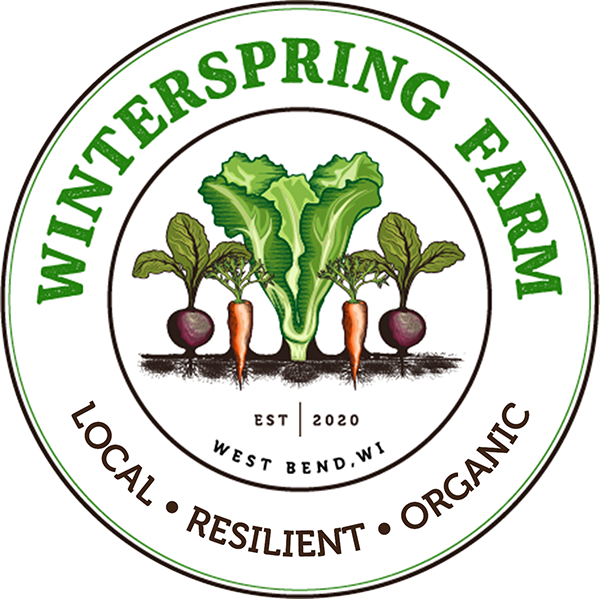 Image 1 of 2
Image 1 of 2

 Image 2 of 2
Image 2 of 2



Tomato Seedlings, Moskvitch
SCIENTIFIC NAME:
Solanum lycopersicum
VARIETIES:
“Moskvich”. Our favorite medium-sized slicer. High quality, early season red heirloom that rivals hybrids. Fruits are round to slightly flattened with deep red color and luscious, rich flavor. Great eaten fresh or processed. Highly resistant to cracking. Like all Russian tomatoes, it can stand up to cool conditions. Semi-determinate. Field or greenhouse. 4-6 oz. Seed source and photo: Johnny’s Selected Seeds
CULTURE:
Transplant into medium-rich garden or field soil 12-24" apart for determinate varieties, 24-36" apart for indeterminate, unstaked varieties, and 14-20" for staking. Plant 3-8" inches deep, covering the root ball well and up to the cotyledons (first leaves). If using grafted plants, take care to ensure the graft union is not touching soil. Water seedlings with a high-phosphate fertilizer solution. For earliest crops, set plants out around the last frost date under floating row covers, which will protect from frost to about 28°F (-2°C). If possible, avoid setting out unprotected plants until night temperatures are over 45°F (7°C). Frost will cause severe damage. Abundant soil phosphorus is important for early high yields. Too much nitrogen causes rampant growth and soft fruits susceptible to rot.
SCIENTIFIC NAME:
Solanum lycopersicum
VARIETIES:
“Moskvich”. Our favorite medium-sized slicer. High quality, early season red heirloom that rivals hybrids. Fruits are round to slightly flattened with deep red color and luscious, rich flavor. Great eaten fresh or processed. Highly resistant to cracking. Like all Russian tomatoes, it can stand up to cool conditions. Semi-determinate. Field or greenhouse. 4-6 oz. Seed source and photo: Johnny’s Selected Seeds
CULTURE:
Transplant into medium-rich garden or field soil 12-24" apart for determinate varieties, 24-36" apart for indeterminate, unstaked varieties, and 14-20" for staking. Plant 3-8" inches deep, covering the root ball well and up to the cotyledons (first leaves). If using grafted plants, take care to ensure the graft union is not touching soil. Water seedlings with a high-phosphate fertilizer solution. For earliest crops, set plants out around the last frost date under floating row covers, which will protect from frost to about 28°F (-2°C). If possible, avoid setting out unprotected plants until night temperatures are over 45°F (7°C). Frost will cause severe damage. Abundant soil phosphorus is important for early high yields. Too much nitrogen causes rampant growth and soft fruits susceptible to rot.
SCIENTIFIC NAME:
Solanum lycopersicum
VARIETIES:
“Moskvich”. Our favorite medium-sized slicer. High quality, early season red heirloom that rivals hybrids. Fruits are round to slightly flattened with deep red color and luscious, rich flavor. Great eaten fresh or processed. Highly resistant to cracking. Like all Russian tomatoes, it can stand up to cool conditions. Semi-determinate. Field or greenhouse. 4-6 oz. Seed source and photo: Johnny’s Selected Seeds
CULTURE:
Transplant into medium-rich garden or field soil 12-24" apart for determinate varieties, 24-36" apart for indeterminate, unstaked varieties, and 14-20" for staking. Plant 3-8" inches deep, covering the root ball well and up to the cotyledons (first leaves). If using grafted plants, take care to ensure the graft union is not touching soil. Water seedlings with a high-phosphate fertilizer solution. For earliest crops, set plants out around the last frost date under floating row covers, which will protect from frost to about 28°F (-2°C). If possible, avoid setting out unprotected plants until night temperatures are over 45°F (7°C). Frost will cause severe damage. Abundant soil phosphorus is important for early high yields. Too much nitrogen causes rampant growth and soft fruits susceptible to rot.







